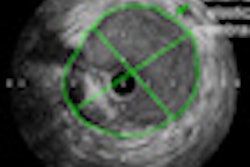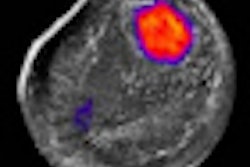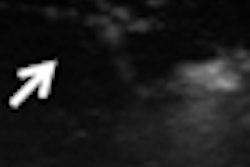Why do some sonography students learn to scan much faster than others? It may be due to their high level of spatial ability (i.e., their ability to visualize and mentally manipulate 3D objects), according to researchers from the University of Missouri - Columbia.
The study team surveyed first-year sonography students in the institution's sonography program and found that spatial ability had a significant correlation with scanning performance scores over their two-semester program. As a result, sonography schools might need to look beyond just traditional criteria such as grade point averages and standardized test scores in their admissions process, said Doug Clem, a clinical assistant professor and clinical coordinator for the university's diagnostic ultrasound program.
"My own personal feeling about using a spatial ability test is that it is another tool to use to identify the strengths and weaknesses in a potential candidate and even current students, so that we can adjust curriculum and pedagogical techniques to enhance the learning process," Clem told AuntMinnie.com. "Low-spatial-ability students can learn to scan -- it just takes them longer and they have to practice much harder at it. It's up to the school as to whether they have the time and resources to commit to those types of students."
After observing over several years that some sonography students picked up scanning much quicker than others, Clem and his study group sought to evaluate the relationship between a student's spatial visualization test score and sonography scanning performance scores. Seventeen students (15 women and two men) were included in the study, and they were divided into two groups: Five first-year students enrolled in beginning cardiac sonography and 12 first-year students enrolled in beginning abdominal and obstetrics/gynecology (Journal of Diagnostic Medical Sonography, July/August 2010, Vol. 26:4, pp. 163-170).
Both groups were evaluated for two semesters and were taught by different instructors, according to the researchers. At the beginning of the semester, a test administrator gave the students the Revised Minnesota Paper Form Board Test (RMPFBT), a 20-minute paper-and-pencil spatial visualization test.
The researchers then compared the RMPFBT results with their scanning performance scores, first at the end of the first 30 hours of instruction and then with the overall average of their scanning scores for two semesters.
Although they did not find a statistically significant relationship after the first 30 hours of instruction, they did discover a very strong correlation between spatial test scores and the averaged scores over two semesters.
"The latter results indicate that high-spatial-ability test scores relate to student achievement in sonography scanning," the authors wrote.
The Pearson Product-Moment correlation coefficient after two semesters was 0.60, which in social science research indicates a strong relationship between the spatial ability scores and the competency scanning scores, according to the researchers. In addition, the coefficient of determination was 0.36, which means that spatial ability can account for 36% of the variation in student achievement.
"In social science research, this statistic is quite significant and also shows a strong relationship between spatial ability and the scanning competency scores," the authors wrote.
Regression analysis also found a statistically significant association for spatial ability scores and scanning scores after two semesters.
The researchers are not sure why there was only a weak relationship for the spatial test scores and scanning performance scores after the first 30 hours of instruction, Clem said. They did note that the first scanning scores were in a close range, possibly because it's a relatively easy test, he said. In addition, the grades could also have been skewed due to test anxiety.
"We are currently doing a qualitative study on these phenomena," he said. "We'll be interviewing the test participants to see if any light can be shed on their thoughts about the testing experience."
The researchers are planning another study involving a much larger and more diverse sample population. Several different learning environments from a wide variety of sonography educational programs will be included, according to the authors.
Clem also noted that a lot goes into being a successful sonographer.
"Great scanning ability is certainly an important factor, but it's not everything," he said.
By Erik L. Ridley
AuntMinnie.com staff writer
October 19, 2010
Related Reading
Low-cost US device shows promise for carotid screening, April 9, 2010
Report: Sonographer training lacking in Eastern Europe, March 9, 2010
Ergonomic issues continue to plague sonographers, September 29, 2009
A small hospital's experience mitigating sonographer injuries, July 14, 2009
Ultrasound breast scanning protocol boosts efficiency, June 3, 2009
Copyright © 2010 AuntMinnie.com




















